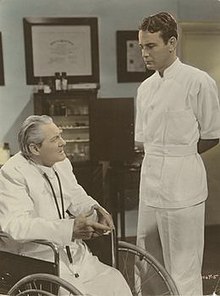
Lionel Barrymore was an American actor of stage, screen and radio as well as a film director. He won an Academy Award for Best Actor for his performance in A Free Soul (1931), and is known to modern audiences for the role of villainous Mr. Potter in Frank Capra's 1946 film It's a Wonderful Life.
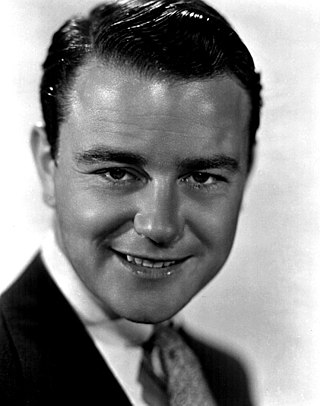
Lewis Frederick Ayres III was an American actor whose film and television career spanned 65 years. He is best known for starring as German soldier Paul Bäumer in the film All Quiet on the Western Front (1930) and for playing Dr. Kildare in nine films. He was nominated for an Academy Award for Best Actor for his performance in Johnny Belinda (1948).

Frederick Schiller Faust was an American writer known primarily for his Western stories using the pseudonym Max Brand. As Max Brand, he also created the popular fictional character of young medical intern Dr. James Kildare for a series of pulp fiction stories. His Kildare character was subsequently featured over several decades in other media, including a series of American theatrical movies by Paramount Pictures and Metro-Goldwyn-Mayer (MGM), a radio series, two television series, and comics. Faust's other pseudonyms include George Owen Baxter, Evan Evans, George Evans, Peter Dawson, David Manning, John Frederick, Peter Morland, George Challis, Peter Ward, and Frederick Frost. He also wrote under his real name. As George Challis, Faust wrote the "Tizzo the Firebrand" series for Argosy magazine. The Tizzo saga was a series of historical swashbuckler stories, featuring the titular warrior, set in Renaissance Italy.

Charles Van Dell Johnson was an American film, television, theatre and radio actor. He was a major star at Metro-Goldwyn-Mayer during and after World War II.

Young Dr. Kildare is a 1938 American drama film directed by Harold S. Bucquet and starring Lew Ayres as Dr. James Kildare, an idealistic, freshly graduated medical intern, who benefits greatly from the wise counsel of his experienced mentor, Dr. Leonard Gillespie. The film was based on a story and characters created by author Frederick Schiller Faust, writing as Max Brand.

Tom Conway was a British film, television, and radio actor remembered for playing detectives and psychiatrists, among other roles.

Internes Can't Take Money is a 1937 American drama film directed by Alfred Santell and starring Barbara Stanwyck, Joel McCrea, Lloyd Nolan and Stanley Ridges. McCrea portrays Dr. Kildare in the character's first screen appearance. Metro-Goldwyn-Mayer continued the Dr. Kildare series with Young Dr. Kildare (1938) starring Lew Ayres as Kildare and Laraine Day as a nurse in love with Kildare. The film was released in the United Kingdom as You Can't Take Money.
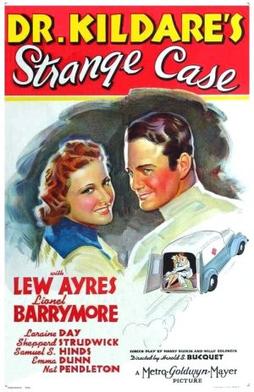
Dr. Kildare's Strange Case is a 1940 American drama film directed by Harold S. Bucquet. This was the fifth of a total of ten Dr. Kildare pictures. Horace MacMahon joined the cast regulars in the series as taxi driver "Foghorn" Murphy.
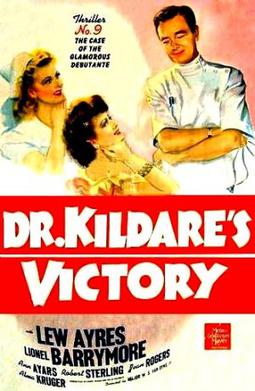
Dr. Kildare's Victory is a 1942 film directed by W. S. Van Dyke. It stars Lew Ayres and Lionel Barrymore. It is the ninth and last of the MGM Dr. Kildare movie series.
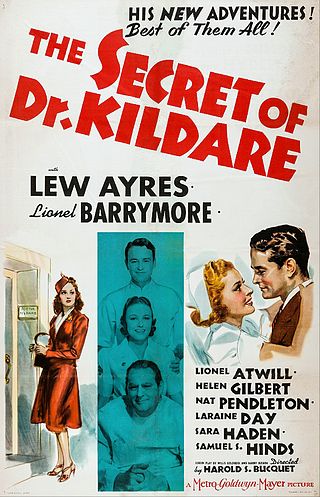
The Secret of Dr. Kildare is a 1939 American film directed by Harold S. Bucquet and produced by Metro-Goldwyn-Mayer. This was the fourth of a total of ten Dr. Kildare pictures, Lew Ayres starred all but the first.

Dr. Kildare Goes Home is a 1940 American drama film directed by Harold S. Bucquet, starring Lew Ayres, Lionel Barrymore and Laraine Day. It is the fifth in the MGM series of nine films with Lew Ayres as Dr. Kildare made from 1938–1942.
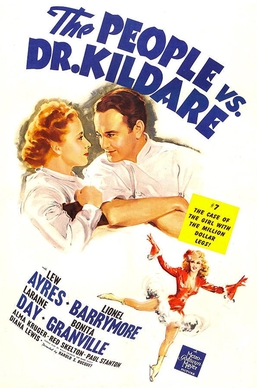
The People vs. Dr. Kildare is a 1941 drama directed by Harold S. Bucquet, starring Lew Ayres, Lionel Barrymore, Bonita Granville, and Laraine Day. Dr. Kildare performs an emergency operation on a crash victim.

Dr. Kildare's Crisis is a 1940 drama film directed by Harold S. Bucquet, starring Lew Ayres, Lionel Barrymore and Laraine Day. Mary Lamont's financier brother Douglas Lamont is subject to seizures, and it seems that he is suffering from hereditary epilepsy.
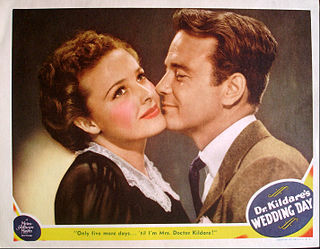
Dr. Kildare's Wedding Day is a 1941 American drama film directed by Harold S. Bucquet, starring Lew Ayres, Lionel Barrymore, and Laraine Day. It is the eighth of a total of nine Dr. Kildare pictures made by the MGM studios. When MGM decided to move up-and-coming star Laraine Day out of the "Dr. Kildare" series, the studio did so in a startlingly dramatic fashion. Adding extra interest to this film in the Kildare series, Barrymore composed the music credited to the Cornelia Bartlett character, and actor Red Skelton provides comic relief.

Calling Dr. Gillespie is a 1942 drama film directed by Harold S. Bucquet, starring Lionel Barrymore, Donna Reed and Philip Dorn. This was a continuation of the series that had starred Lew Ayres as Dr. Kildare. Ayres, however, had declared conscientious objector status to World War II, and was taken off the film. Kildare's mentor, Dr. Gillespie, portrayed here and in earlier films by Barrymore, became the lead character. In this first Kildare-less entry, Gillespie has a new assistant, refugee Dutch surgeon Dr. John Hunter Gerniede.

Calling Dr. Kildare is a 1939 film in the Dr. Kildare series. Directed by Harold S. Bucquet, it stars Lew Ayres as the young Dr. Kildare and Lionel Barrymore as Dr. Gillespie, his mentor. The second of MGM's series of Kildare films, it introduces Laraine Day as nurse Mary Lamont, the love of Kildare's life.
Dr. Gillespie's Criminal Case is a 1943 film in the Dr. Kildare series. Based on characters created by Max Brand. The third of MGM's Dr. Gillespie series to dispense with the services of Dr. Kildare after Dr. Kildare's Victory (1942).

Between Two Women, made in 1945, was the sixteenth film in the Dr Kildare series. This was the fourteenth of fifteen in which Lionel Barrymore starred as Dr. Leonard B. Gillespie. The film following was Dark Delusion (1947), which was the last in the Dr. Kildare series released by Metro-Goldwyn-Mayer (MGM). This was the last of Van Johnson's character, Dr. Randall 'Red' Adams, also seen in three previous Kildare films.

Dr. Kildare is an NBC medical drama television series which originally ran from September 28, 1961, until August 30, 1966, for a total of 191 episodes over five seasons. Produced by MGM Television, it was based on fictional doctor characters originally created by author Max Brand in the 1930s and previously used by MGM in a popular film series and radio drama. The TV series quickly achieved success and made a star of Richard Chamberlain, who played the title role. Dr. Kildare inspired or influenced many later TV shows dealing with the medical field. Dr. Kildare aired on NBC affiliate stations on Thursday nights at 8:30–9:30 p.m. until September 1965, when the timeslot was changed to Monday and Tuesday nights at 8:30–9:00 p.m. through the end of the show's run.
Young Dr. Kildare is a syndicated medical drama television series which originally ran from September 21, 1972, for a total of 24 episodes. It was a remake of the Richard Chamberlain series Dr. Kildare which in turn was based on fictional doctor characters originally created by author Max Brand in the 1930s and previously used by MGM in a popular film series and radio drama.

